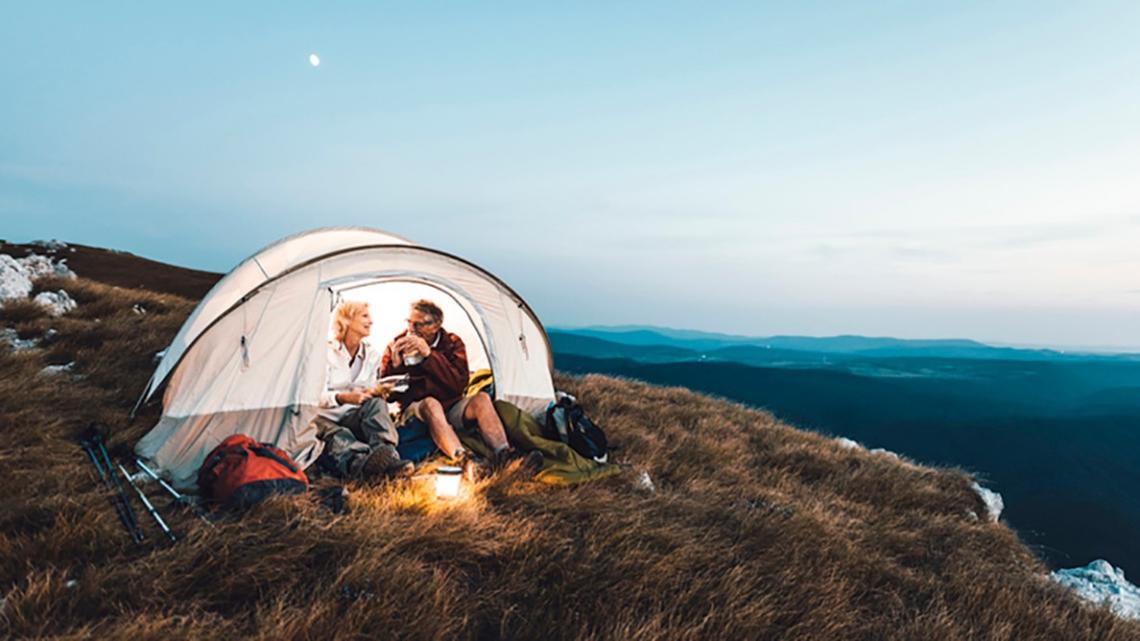Staying Fit
Train travel has been around for centuries but certain railways and experiences can change the way you think about travel. Maybe even change your life. We asked four travel writers to share the train travel adventures that stayed with them long after they left the track.
Glacier Discovery Train
Anchorage to Grandview, Alaska
Slow travel is the way to go in the Land of the Midnight Sun.
Looking out the window from my seat on the right side of the train car, I saw a flash of white. Then another. And another. It wasn’t until I heard a shriek of delight from a nearby passenger that I realized the white flashes were beluga whales. It was the first time I’d ever seen them in the wild, and it was all thanks to the Alaska Railroad.
When it comes to traveling, I’m usually the get-there-as-quick-as-you-can type.
However, I’ve learned that when it comes to truly experiencing Alaska, slow travel is best. And one of the best ways to really soak in all that the land has to offer is aboard the Alaska Railroad.
I was on the Glacier Discovery Train from Anchorage when we spotted the belugas — along with Dall sheep, moose and bald eagles — as part of the railway adventure on the Alaska Railroad.
I hopped off the train at the Spencer Glacier Whistle Stop for a preplanned, off-the-grid adventure with a small group from the train. We joined our guide in a remote wilderness area within Chugach National Forest and set off in a raft to paddle on Spencer Lake. Surrounded by icebergs floating in the lake’s calm water, I felt very small and in awe of the untouched nature around me.
Gazing up at the icebergs, I was surprised by the color — they weren’t the solid white I thought they would be. Instead, they were varying shades of blue created by scattered light, with the black of moraine — the rocks and debris glaciers collect as they slowly move over land — woven in. The icebergs’ colors continued to change as we paddled past them. I was mesmerized.
Our raft reached the Placer River, which carried us on a relaxed route through the Alaskan wilderness. The quiet followed us on the river, disrupted only by small rapids and the occasional bird soaring overhead.
When our adventure ended, we trekked back to the train tracks and waved down the train to head back to civilization. Our small group was quiet. We were still mesmerized by the remote and awe-inspiring beauty we had experienced thanks to the Alaska Railroad.
Round-trip rates start at $141.
Susan B. Barnes, a longtime travel writer, has written for Afar, Allrecipes, Condé Nast Traveler, Travel + Leisure and other publications.
Eurail Pass
In 1977, my new husband, Matt, and I traveled by rail to Florence, Italy, aiming to see the works of Botticelli and da Vinci at the Uffizi Gallery and buy handmade leather sandals. At the station, tourism representatives told us all hotels were booked.
No problem: We bypassed the lines at the ticket counter, took a two-hour train ride to the medieval city of Siena and were devouring handmade tortellini by sunset.
Matt and I could do that because we were using a Eurail Pass, the all-you-can-eat buffet of European train travel. After validating our 21-day unlimited mileage passes, which cost about $200 each, we could savor close-up views of a dozen countries on our own schedule, boarding and disembarking on a whim. We simply flashed our passes when the conductors came to check tickets.
What memories we made riding side by side! I’ll never forget rolling toward Amsterdam with a window-seat vista of fields of multicolored tulips in bloom — and, of course, those gently whirling windmills.
Schmoozing with passengers from other countries was a bonus. On our way from Amsterdam to Switzerland, we chatted about the global economy with a Dutch commodities trader in an immaculately tailored suit heading to his weekend chalet in Germany. He pointed out historic towns on the Rhine River, Cologne’s imposing Gothic cathedral and the dense Black Forest.
Matt and I crossed paths — twice — with an intrepid pair of Australian honeymooners who were using Eurail passes on a five-month odyssey. Matt made their acquaintance by gallantly helping the husband, Stan, with the couple’s two oversized suitcases.
We talked about the Vietnam War and about daily life in Australia. After our second encounter, a chance meetup near the Barcelona train station, Stan and Joy joined us for a sightseeing boat ride around the harbor and treated us to sangria at a local café.
Over the years, my rides using a Eurail Pass — starting in 1971 as a $5-a-day backpacker who slept on trains to avoid paying for lodging — have always satisfied my craving for flexibility and freedom when traveling. If you don’t want to plan your exact itinerary beforehand and make advance reservations, they’re a hassle-free way to do Europe your way.
Given the modern-day flock of European budget airlines, why do I remain a Eurail fan? Passes allow you to go where you want, when you want. Trains transport you to the heart of major cities and to dots on the map you’ve never heard of. Feel the itch to explore further? Simply hop on the next train.
Rates for a 22-day pass start at $593 ($533 for age 60 and older).
Kitty Bean Yancey is an award-winning former USA Today deputy managing editor and travel writer.



































































